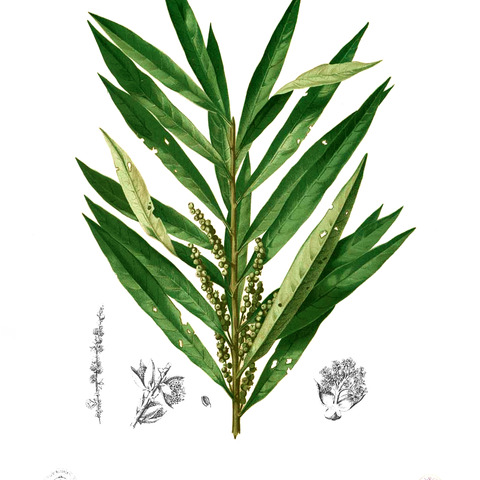A small shrub up to 1-3 m high. The twigs are round and with small raised pores. The young tips are covered with soft downy hairs. The leaves are long very numerous and hang down. They are 5-10 cm long by 2-12 cm wide. The leaves are entire and with glands underneath. The flower spikes also hang down and are shorter than the leaves. The male flowers become hairless at maturity and the female flowers have large bracts which taper to a point. The fruit capsules are round, attached directly without a stalk, surrounded by bracts and burst open.


